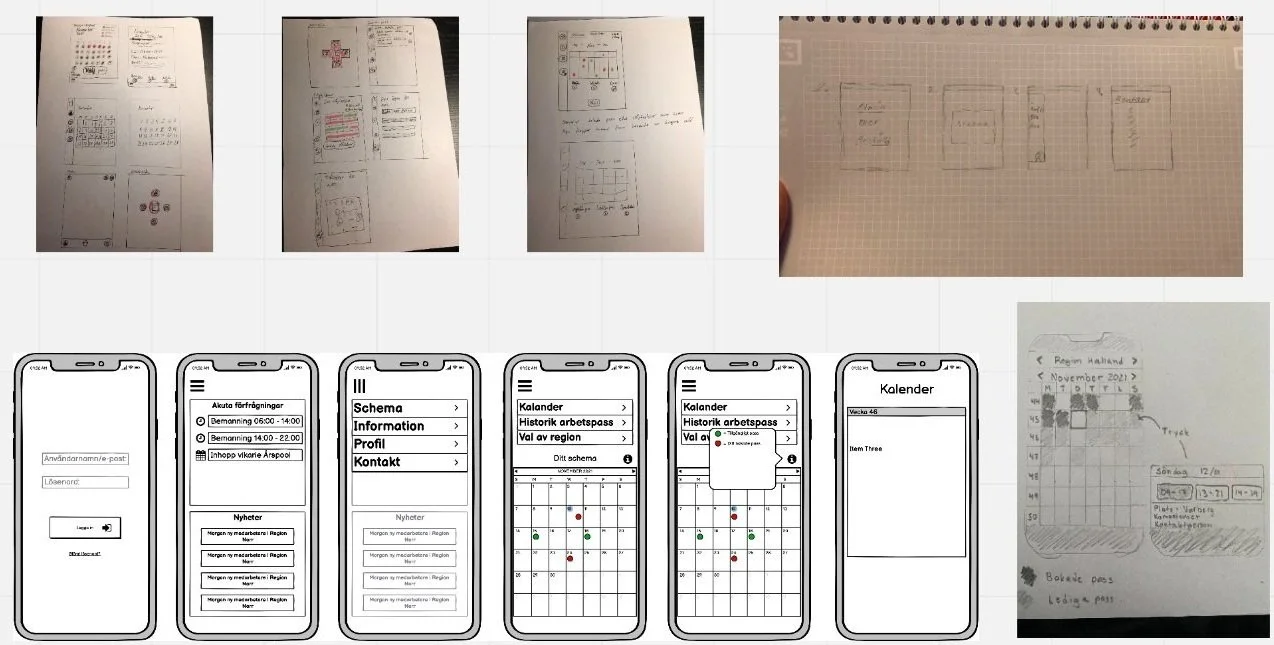Ambulance Staffing
Ambulance Staffing
Overview
Me and the design team were assigned a brief by Ambulance Staffing, where I had the role of an Evaluation Specialist, my role was to assess and measure the effectiveness of user experience designs and solutions. I worked closely with the design team to plan and conduct various evaluation methods to gather feedback and insights from users. One of my primary responsibilities was to define evaluation objectives and develop evaluation plans that align with the project goals. I employed a range of evaluation techniques, such as usability testing, heuristic evaluation, and user surveys, to collect qualitative and quantitative data. During usability testing, I observe and analyze how users interact with the design, identify any usability issues, and gather feedback on their overall experience. We achived our goals through tools such as Figma, Balsamique and Squarespace.
Methodology
The brief we were assigned explained how the core problem lay in how difficult it was to get a proper overview, which made it difficult to plan ahead. The group collectively concluded that the problem (UX statement) was that the information the staffing unit had was too dispersed, which we discovered after our first interview with the client. The meeting was extremely important because we needed to clarify what the client expected and demanded.
At the beginning of the design process, the group sat down with our project manager and calculated how long the biggest moments should take and the individual tasks. The group collectively concluded that we wanted to use Clickup, a tool that helps plan main moments, tasks, and how long things should take. This tool was new to all of us but proved to be very effective and clarified the times we had to perform the different tasks.
We started with desktop research to gather as much empirical data as possible before any of us continued. We encountered problems within the first few hours of desktop research; we quickly realized that there was not much information available. The group continued to conduct interviews instead. Through the client, we were able to get staffing employees to interview. This was new territory for both me and my group members because in previous projects, we have always found the information we needed to continue with stable empirical data. The user needs to be in focus during the design process.
During the research phase, our group discussed which method would have been the best and safest to come up with what the client was looking for. We concluded that cooperative design would have been the safest method to follow since staffing workers were in focus. Rather than users and customers being passive recipients, they can participate in the design process.
After creating interview guide number 2, we added a form with more questions to create a persona hypothesis that would be the intended future user of the application. The group explained to the user that we are creating a persona based on the answers we get from the added form at the end of the interview. A persona is used to help designers design according to a specific selected user's needs. In the result, we found out how a general user would use the system due to a lack of experience in the field. During this process, my group members and I learned that we had not created a persona but rather a persona hypothesis.
The group spent the majority of the time creating a Figma prototype. We sat individually and drew sketches to get everyone's ideas out. We then continued to sit and present the intended prototype on Figma. Through check-ins, we could get the artifact that the client had envisioned. The design team also spent several hours on user testing. We received a lot of positive feedback but also very good constructive criticism.
Early Sketches and prototypes
Finished Calender Prototype


